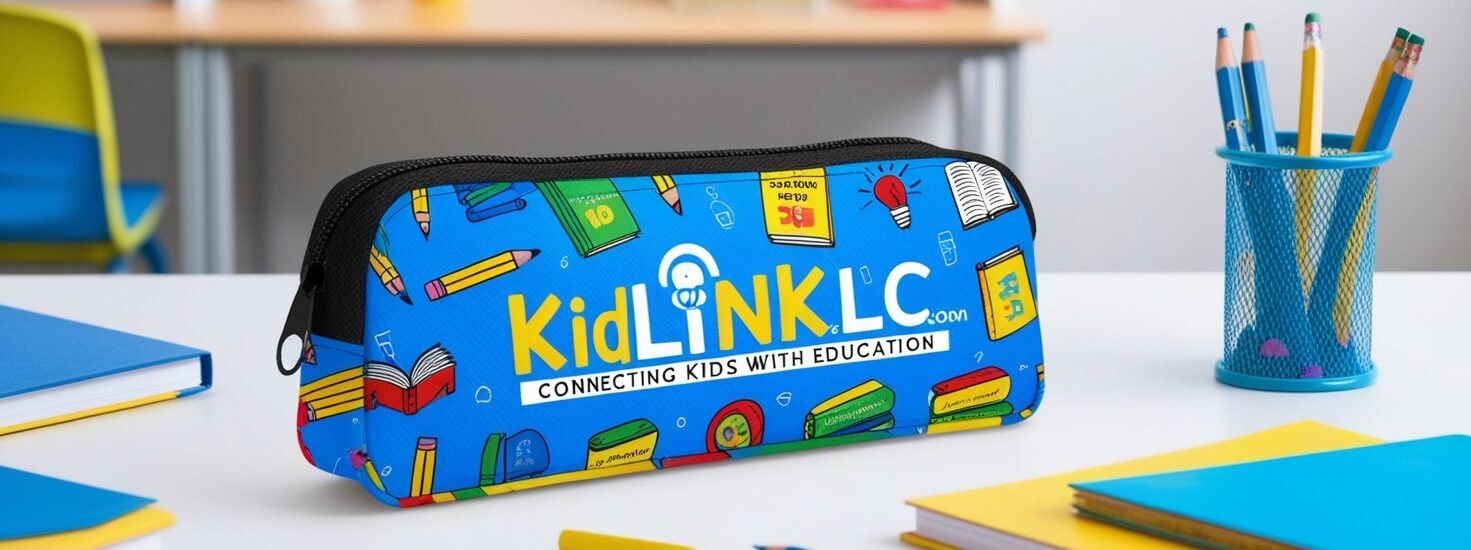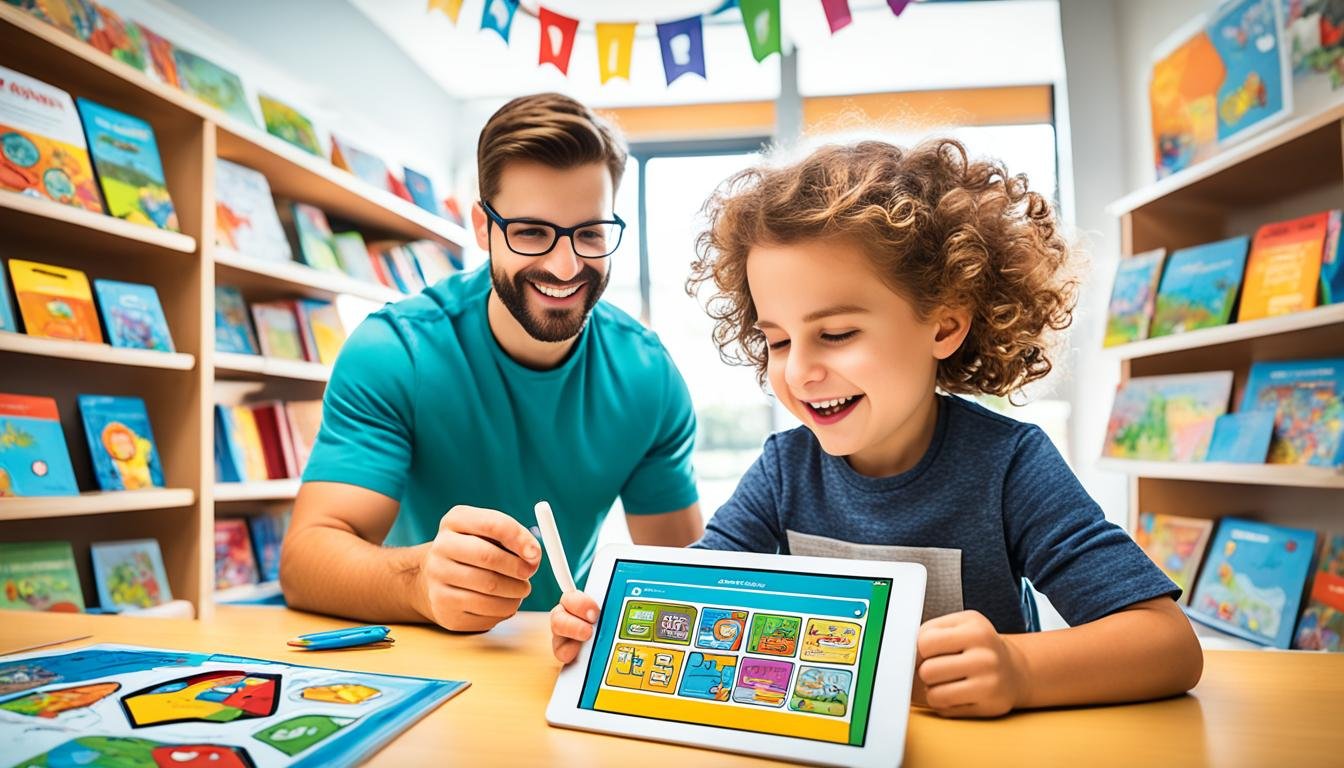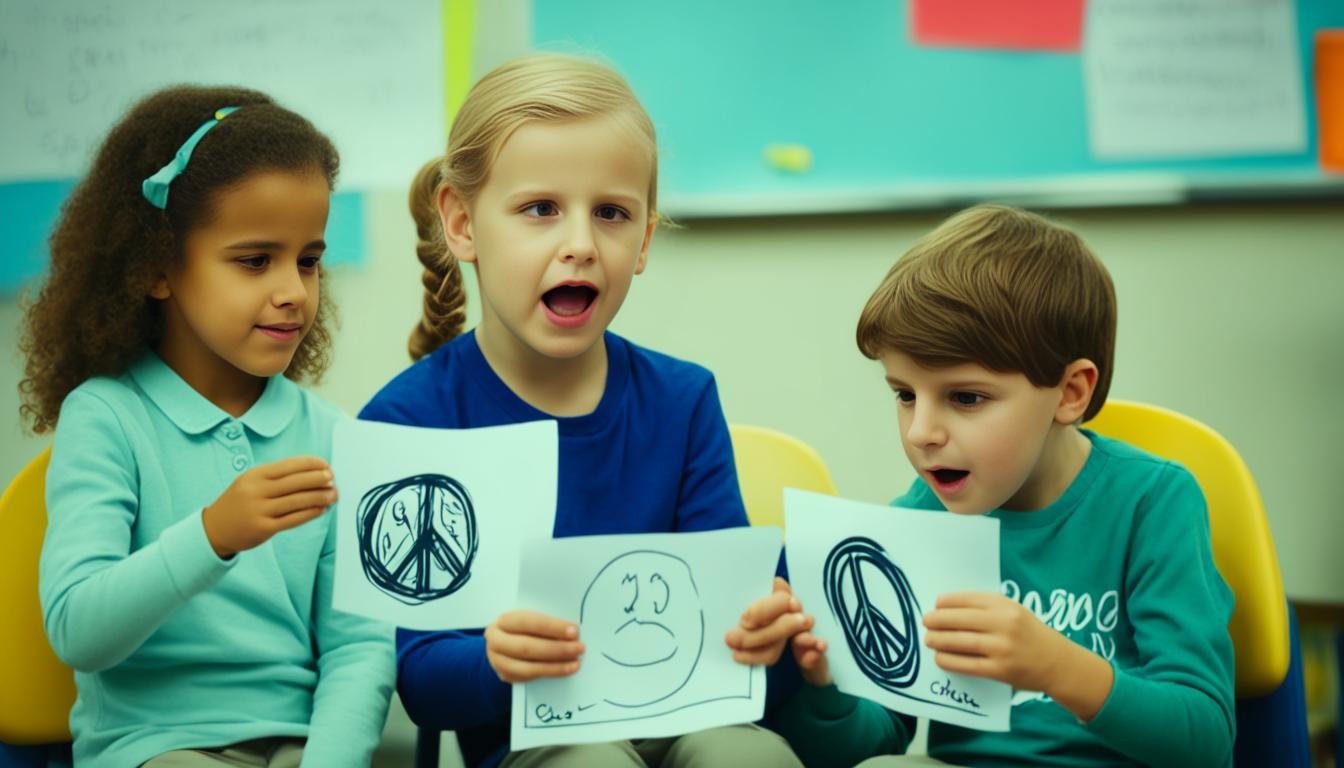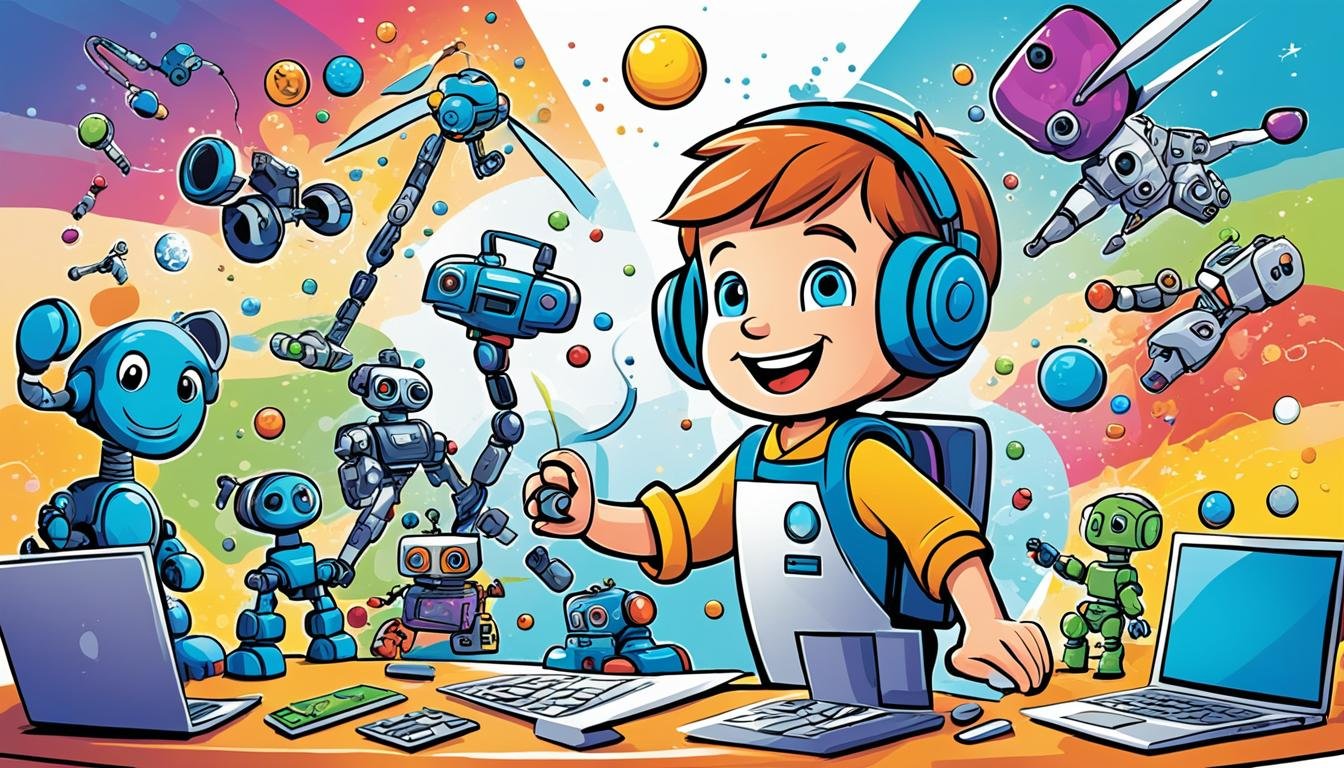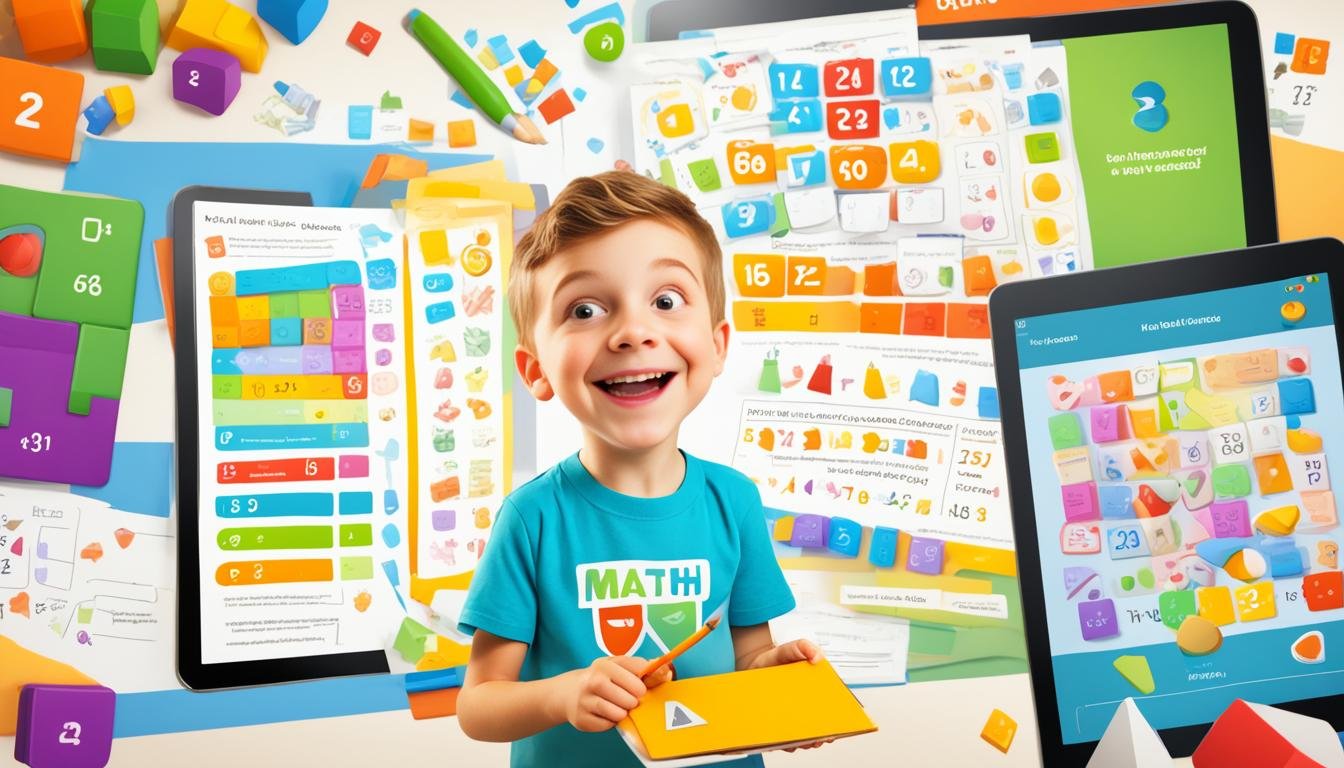How Can Parents Ensure Safe and Productive Use of Educational Apps and Online Resources?
In today’s world, digital tools are changing how we learn. How can you make sure your child uses educational apps safely and gets the most out of them? It’s important to know how to use educational apps safely to make learning better and keep your child safe online. With the right tips and controls, you can create a safe digital space for your child to explore and learn.
By learning about safe app use and setting up controls, you can help your child use technology wisely. This balance is key to making the most of technology for learning while keeping your child safe.
Key Takeaways
- Understand the importance of parental guidance in digital learning.
- Familiarize yourself with educational apps safety tips.
- Implement parental controls for apps to enhance online safety for kids.
- Encourage open discussions about technology use within your family.
- Stay informed about new educational technologies and their implications for your child.
The Importance of Educational Apps in Modern Learning
In today’s world, educational apps are key to improving how we learn. They make learning fun, interactive, and easy for students of all ages. These apps change old teaching ways by adding new tools.
Technology has made learning easy and open. Students can now learn on their own and explore different subjects. This is vital for teaching kids about digital literacy. It prepares them for the jobs they will have in the future.
Educational apps make learning fun and help students work together. They use games to make learning exciting. This makes kids think better and solve problems more easily.
Teachers and parents see how well these apps work. They are not just extra tools. They are key parts of how we will learn in the future. They show us how important it is to use technology wisely in education.
Understanding Digital Literacy for Children
Digital literacy means having the skills to use the internet safely and wisely. It’s crucial for kids to know how to use technology and share information well. They also need to learn how to check if information is true or not.
Adding online safety education to school programs helps kids stay safe online. This helps them become good digital citizens. It also helps them tell real news from fake news.
Teaching kids about digital literacy means giving them the right tools to use technology safely. Schools and parents should work together. They should teach kids about the right way to act online, like being kind and knowing what they share online can be seen by others.
Groups like KidLinkLC.com help kids find good educational stuff online. They make a big difference in teaching online safety education. Things like forums, workshops, and fun games make learning about digital literacy fun and stick in kids’ minds.

| Skills Associated with Digital Literacy | Description |
|---|---|
| Using Technology | Understanding how to use devices and applications efficiently. |
| Online Communication | Practicing respectful and clear communication across digital platforms. |
| Information Evaluation | Critically assessing the reliability and validity of online information. |
| Privacy Awareness | Recognizing the importance of protecting personal information online. |
| Digital Citizenship | Understanding and practicing responsible behavior in digital spaces. |
Safe Use of Educational Apps
Choosing the right educational apps for your kids is key to their safe use. It’s important to pick apps that are both fun and safe. They should also offer valuable learning content.
Identifying Quality Educational Apps
When looking at educational apps, focus on what makes them good. Don’t just go for the ones that look cool. Make sure the app:
- Matches your child’s learning goals and standards
- Encourages your child to think and participate
- Is liked by teachers and parents
- Is right for your child’s age and level
This way, your child gets to learn from safe and engaging apps.
Evaluating App Content and Features
It’s important to check what the app offers. Look at these things:
- Make sure it has clear learning goals
- Check how it handles user data
- See if it’s easy for your child to use
- Watch out for in-app purchases or ads that might be a problem
By looking at these things, you help your child use educational apps safely and effectively.
| Criteria | Indicators of Quality Apps | Safety Aspects |
|---|---|---|
| Educational Alignment | Meets curriculum standards | Clear data privacy policy |
| Engagement | Interactive and hands-on experiences | No inappropriate ads |
| Usability | User-friendly interface | Children’s data is protected |
Setting Up Parental Controls for Apps
Setting up parental controls for apps is key to keeping kids safe online. There are many tools that help parents manage what apps kids use. These tools let you block bad content, set time limits, and watch how they interact online.
Types of Parental Controls Available
Looking into different parental controls is a good idea. Here are some options:
- Built-in device settings: Most phones and tablets have their own parental controls. These let you keep an eye on app use.
- Third-party apps: There are many apps made just for parental controls. Examples include Norton Family, Qustodio, and Bark, which offer lots of features.
- Router-based controls: Some routers can block certain websites at home. This means you can control all devices on your Wi-Fi.
Setting Boundaries with Filters and Monitoring Tools
It’s important to set clear rules for app use. Start by picking filters to block bad content. This way, you control what your kids see online. Then, use tools to monitor how they use apps. This helps spot problems early.
Checking in on app activity and talking about it with your child is key. It keeps the lines of communication open and teaches them about safe online habits.

| Type of Control | Features | Benefits |
|---|---|---|
| Built-in Device Settings | Screen time limits, content restrictions | User-friendly; no additional cost |
| Third-party Apps | Detailed reports, alerts, and monitoring | Customizable; comprehensive monitoring |
| Router-based Controls | Network-wide filters, device management | Control all devices on the network |
By looking into these parental controls and setting clear rules, you can make sure your kids use apps safely and for learning.
Creating a Family Media Agreement
Creating a family media agreement is key to managing tech use at home. It sets clear rules and roles for everyone. This way, your family can create a healthier digital space together.
It also keeps the conversation going about app use and why some areas need to be tech-free.
Defining Tech-Free Zones
Setting tech-free zones in your home helps everyone connect better. Choose spots like the dining area or bedrooms to be device-free. This encourages people to talk more and enjoy each other’s company without distractions.
Encouraging Family Discussions About App Use
Talking often about app use is crucial. It helps kids feel safe sharing their online experiences. This way, parents can understand their kids’ online activities better.
A family media agreement helps guide these talks. For tips on making it work, check out this resource.
Monitoring Children’s App Usage Effectively
It’s key to keep an eye on how kids use apps to keep them safe online. Start by talking openly with your kids about the apps they use and what they see online. This helps build trust so they feel okay sharing their online stories.
Set times to check their app use, like looking at the apps they’ve downloaded and how often they use them. This helps you spot any risky behaviors early. Watch for apps that are too grown-up or ones that make them stare at screens too much.
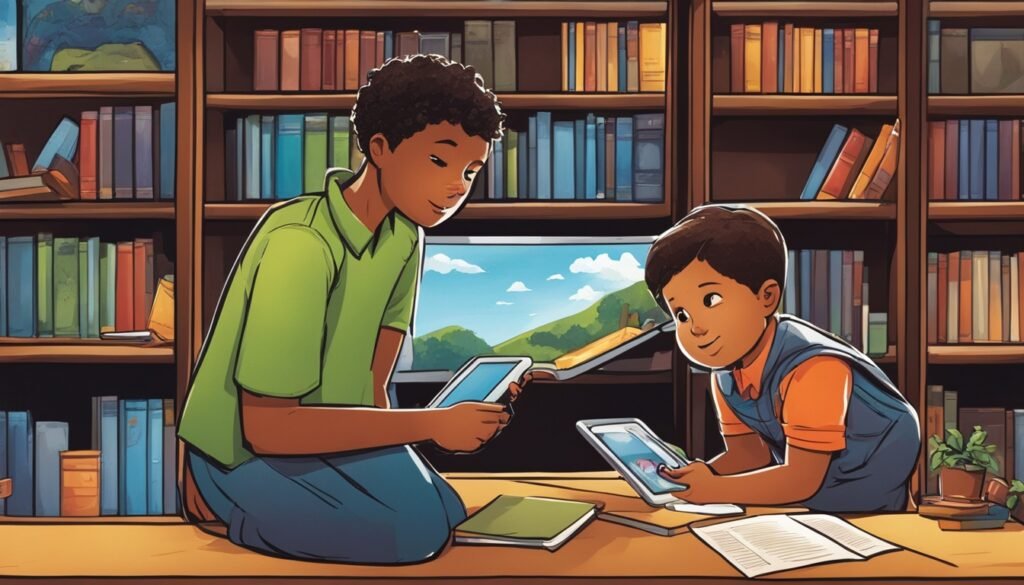
Use built-in device features or apps to keep an eye on their app use. Many apps let you track how much time they spend on them, set limits, and filter content for age. This mix of tools and watching over them makes your monitoring better.
It’s also important to get your kids to tell you about the apps they use and any bad content they find. This teaches them to be careful and responsible online. It’s key for keeping them safe on apps.
Being active in your kids’ digital world and using tools helps protect their online time. It also helps them feel confident online. Talk to them about using educational apps right, which helps them develop good digital habits.
For more tips on online learning, check out this resource.
Encouraging Critical Thinking with Online Resources
In today’s digital world, teaching your kids to think critically is key. Online resources offer both good and bad when it comes to checking facts. By teaching critical thinking, you help your kids handle online content wisely and responsibly. This part will show you how to teach your kids to check facts online and talk online responsibly.
Teaching Children to Verify Information Online
It’s important for kids to know how to check if sources are trustworthy. Here are some easy tips to help them:
- Encourage children to check the author’s credentials and background.
- Teach them to look for citations and references supporting claims.
- Show them how to cross-check information across multiple reputable websites.
- Discuss the importance of understanding the difference between opinion pieces and factual reporting.
Promoting Responsible Digital Communication
Teaching kids to communicate online responsibly is just as important. By showing them how to talk respectfully, you help them make better connections. Here are some tips:
- Encourage empathy by teaching them to understand how their words can affect others.
- Discuss the value of thoughtful responses over quick reactions to online messages.
- Emphasize the importance of keeping privacy and respect in online discussions.
- Promote awareness of digital footprints and how online actions can have long-term effects.
Adding critical thinking tools to your child’s online life makes the internet safer and more informed. These skills are a solid base for learning and being responsible in the future.
Best Practices for Using Educational Apps
Educational apps can greatly benefit children by offering flexible and engaging learning. To make the most of these apps, it’s important to follow best practices. This ensures learning is effective and safe. Parents should be active in guiding their children’s use of technology.
Balancing Screen Time with Other Activities
It’s crucial to balance screen time with other activities for children’s development. This balance helps children lead a healthy life, engaging in physical, social, and mental activities. Set aside specific times for educational apps, but also make sure they have time for outdoor play, reading, and family time.
This mix of activities helps kids develop fully. It ensures they don’t miss out on important aspects of life.
Creating a Positive Digital Environment
A positive digital environment is key to how children use educational apps. Talk openly with your kids about their online experiences and set rules for technology use. Make sure they feel safe to share their thoughts and concerns about privacy and content.
Teach them about online safety and how to handle their data responsibly. Use resources like LearnSafe and Kidlink to educate them. Create a supportive space for their digital learning.
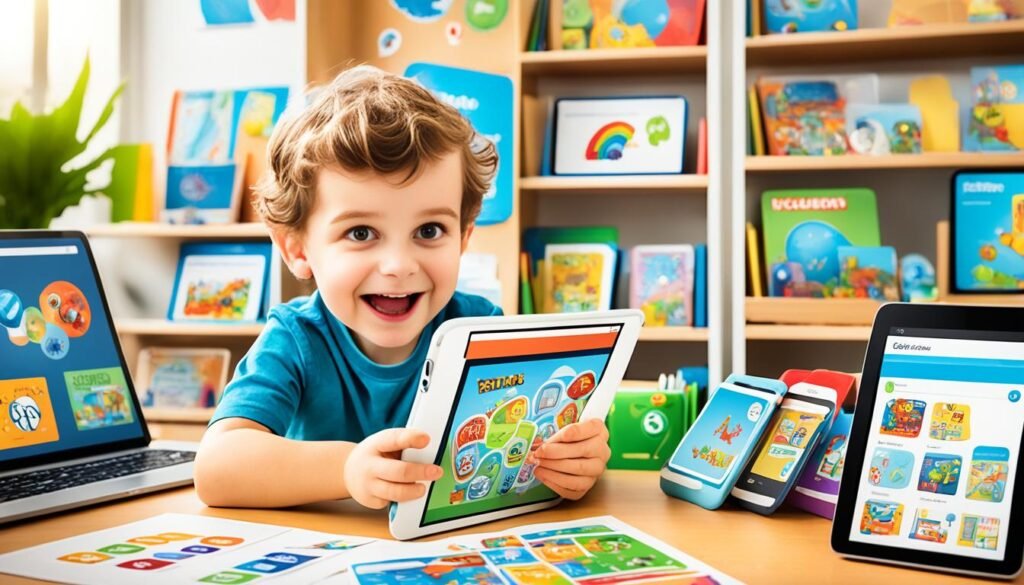
| Activity Type | Recommended Duration | Benefits |
|---|---|---|
| Screen Time (Educational Apps) | 1-2 hours | Enhances learning and engagement |
| Physical Play | 1 hour | Boosts health and well-being |
| Family Time | 30 minutes | Strengthens family bonds and communication |
| Reading | 30 minutes | Improves literacy and comprehension |
Protecting Children’s Privacy Online
In today’s digital world, it’s key to know how to keep kids’ online info safe. Many educational apps ask for personal details. Parents need to understand how to manage these digital interactions. By adjusting privacy settings and knowing what data apps collect, you can boost your kids’ online safety.
Understanding App Security Measures
App security is crucial for keeping kids’ info safe online. Parents should look into each app’s settings. This means:
- Adjusting privacy settings to limit data sharing.
- Reviewing what permissions an app asks for when you install it.
- Checking for app updates regularly to fix security issues.
These steps help protect your kids’ privacy when they use educational apps. For more tips on this, check out this resource.
Discussing the Importance of Personal Information Safety
Talking about keeping personal info safe helps kids be aware and careful online. Make sure to discuss:
- What info should stay private, like their name, address, and school name.
- Why strong usernames and passwords are important.
- How to spot safe apps and websites.
Talking to your kids about protecting their personal info teaches them to make smart choices online. Adding these talks to daily life helps them develop good habits with digital tools. These steps help them safely explore the online world, showing how crucial privacy protection is for kids.
Strategies for Safe Browsing on Educational Apps
It’s crucial to keep your child’s online experience safe by teaching them about safe browsing on educational apps. Show them how to spot safe websites and use privacy settings. This will help make their online world secure.
Recognizing Safe and Unsafe Websites
Teach your kids what makes a website safe. Tell them to look for “https://” at the start of a URL to ensure a secure connection. Also, talk about why certain educational sites are trustworthy. Here are some tips to help them:
- Look for a clear design and easy navigation.
- Check for contact information and details about the organization.
- Encourage skepticism towards unfamiliar sites.
By learning these tips, your child will know how to find safe websites online. Regular talks will help them understand why it’s important to browse safely on educational apps.
Teaching Children About Privacy Settings
Teaching kids about privacy settings is key to their online learning. Show them how to adjust privacy settings on apps and websites. Explain why it’s important to protect their personal info. Here are some important points:
- Understanding what data is shared and with whom.
- Learning to customize privacy settings proactively.
- Explaining the risks of oversharing personal information online.
Talking with your kids about privacy settings will help them manage their online presence safely. This knowledge ensures they browse educational apps securely. Visit this link for more on safe online interactions.

Collaborating with Schools for Online Safety
Parents and schools must work together to keep kids safe online. It’s important to join efforts that improve online safety. By doing so, you help make the internet safer for your child.
Engaging in School Workshops and Seminars
Joining educational workshops at school lets parents meet teachers and learn about online safety. These events cover the latest digital issues and teach you how to help your child online. Use these chances to learn about school rules for online use, security steps, and safe habits at home. This teamwork helps make a safer online world for students.
Creating a Supportive Home-School Partnership
A strong partnership between home and school is key for online safety. Talking with teachers and school staff helps share concerns and ideas. Together, parents and teachers can agree on safe digital behavior standards. This ensures kids learn the same online safety lessons at home and school.
Working with the school lets parents push for more digital literacy and safety. Look for ways to team up on events that show good tech use and safety. For more info, check out this resource.
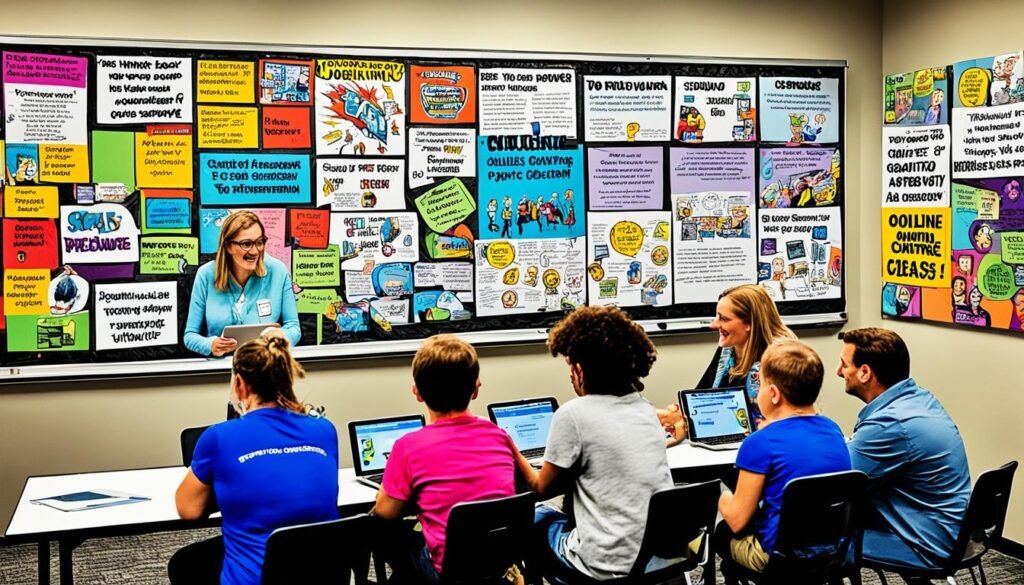
Teaching Children About Cyberbullying
Parents need to teach their kids about cyberbullying to help them deal with online harassment. It’s key to make them aware so they can handle tough situations. This part talks about spotting cyberbullying signs and how to stop it.
Recognizing Signs of Cyberbullying
Parents should watch for signs of cyberbullying in their kids. Look out for these signs:
- Sudden changes in mood or behavior
- Avoidance of technology or social media platforms
- Increased anxiety or reluctance to attend school
- Frequent complaints of headaches or stomachaches
Knowing these signs helps you support your child better through tough times.
Strategies for Prevention and Reporting
Stopping cyberbullying is key. Here are some ways to do it:
- Talk to your child about their online life.
- Teach them to block or report bullies online.
- Explain why it’s bad to act mean online.
- Show them how to be kind online by being a good example.
Talking openly with your kids helps build a respectful online world. This way, they’ll know how to spot and fight cyberbullying.

| Signs of Cyberbullying | Possible Responses |
|---|---|
| Change in mood | Discuss feelings openly; offer reassurance |
| Avoiding technology | Encourage gradual re-engagement; monitor interactions |
| Increased anxiety | Consult a school counselor or therapist |
| Physical complaints | Ensure they feel safe at home; monitor school environment |
Adapting to New Technologies and Their Risks
New technologies bring new challenges when it comes to keeping kids safe online. It’s important to stay updated on the latest educational apps and their risks. This way, you can make smart choices for your kids.
Creating good digital habits helps your kids use technology wisely. This is key in today’s world.
Staying Informed About Emerging Apps and Resources
Technology changes fast, so educational apps are always updating. To keep up, you need to pay attention to new apps that could help your kids learn. Check out reviews and expert advice to understand the good and bad sides of these tools.
For more tips on using technology in education, check out this resource.
Adjusting Strategies as Technology Evolves
Technology is always changing, bringing new risks and chances. To keep up, you need to update your digital safety plans. Teach your kids about online dangers and talk with them about their online activities.
Building trust lets you learn about safe tech use together. This is crucial in today’s digital world.

Conclusion
Parenting in today’s digital world means we must guide our kids on how to use apps safely. It starts with parents who know their important role. By picking quality educational apps and watching how kids use them, we can make their online time valuable.
Staying updated on new tech and its risks helps us protect our kids better. Talking about online habits, choosing apps, and privacy teaches them to be safe online. This keeps them safe and helps them use technology wisely.
Keeping online learning safe is a job for parents, teachers, and tech companies together. Working together, we can make sure technology helps our kids learn and stay safe.
